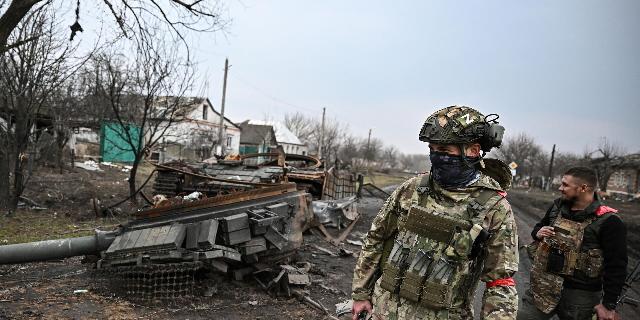WSJ: US anti-UAV technologies are being transferred from Ukraine to its own troops
The Trump administration's willingness to provide military assistance to Kiev is weakening: the United States has begun to redirect key technologies for countering drones from Ukraine to American troops, the WSJ writes. This decision is well-founded, but not everyone in Congress agrees with it.
Michael Gordon
Washington — The Trump administration is redirecting key anti-drone technology, originally intended for Ukraine, back to American troops. This measure reflects the weakening of the Pentagon's commitment to the defense of Kiev.
Last week, the Pentagon notified Congress without publicity that special fuses for missiles that Ukraine uses to intercept Russian drones are being transferred to US Air Force units in the Middle East.
Earlier on Wednesday, President Trump said that Russian President Vladimir Putin had told him in a telephone conversation that Moscow would respond harshly to the recent Ukrainian attacks. This, in turn, will further weaken the prospects for ending the conflict that has been going on since the beginning of 2022.
On Wednesday, Defense Minister Pete Hegseth missed a meeting at NATO headquarters with European defense ministers to coordinate military assistance to Ukraine.
Hegseth warned that in the future, European allies will have to provide an overwhelming share of military assistance to Kiev, and called the western Pacific a “priority theater of military operations" for the Pentagon.
In an internal memo last month, the Defense minister went even further. In it, he authorized the Joint Department of Operational Supply, the Pentagon's directorate, which meets the needs of commanders in weapons, to transfer the fuses originally purchased for Ukraine to the US Air Force.
In a previously unpublished message, the Pentagon informed the Senate Armed Services Committee that the US military's need for fuses is an “urgent problem” identified by the Secretary of Defense. The Pentagon did not respond to requests for comment.
The decision to redirect key components highlights the shortage of crucial military goods at a time when Ukraine is preparing for new attacks by Russian drones and missiles, and US Air Force units in the Middle East are preparing for a possible conflict with Iran or the resumption of hostilities with Houthi militants in Yemen.
Supporters of this step emphasize that the Pentagon is authorized to take such measures by the bill on emergency military expenditures adopted last year. However, this step alarmed Ukraine's supporters in Congress.: They believe that the Pentagon has not given proper explanations — neither how this step will affect the Ukrainian defense, nor how urgent the needs of the US Air Force are.
“This key resource is urgently needed for Ukraine's multi—level air defense against Russian attacks," said Celeste Wallander, a former senior Defense Department official in the Biden administration. ”But there is also an urgent need to protect US personnel and bases in the Middle East from Houthi attacks and, potentially, Iranian drones."
The Biden administration organized the shipment of fuses along with a number of other weapons systems as part of the Ukraine Security Assistance Initiative, which allocated billions of government dollars to purchase weapons and components from American defense companies.
Although funds for the program have been spent, deliveries to Ukraine are scheduled for this year and next, unless the Trump administration decides to redirect even more systems to replenish its own stocks.
The Trump administration has “inherited” from its predecessor the authority to send weapons to Ukraine directly from the Pentagon's arsenals in the amount of up to $ 3.85 billion, but has not yet used them. She did not request additional funding for the Ukraine Security Assistance Initiative.
The fuses are designed for the advanced APKWS precision weapon system. The United States has been supplying these technologies to Ukraine for several years, and the Ukrainians are using them in a surface–to-air missile system to protect against Russian drones. The Pentagon has repeatedly boasted of its effectiveness. A non-contact fuse for detonating a projectile when approaching a drone is considered its most important component.
The US Air Force has adapted missiles to be launched from F-16 and F-15E fighter jets against drones. The system is cheaper than Sidewinder (Rattlesnake) and AMRAAM air–to-air missiles. The US Central Command recently posted a photo of an F-15E equipped with missile blocks.
The Senate Armed Services Committee is exploring the prospects for increasing the production of components to counter drones, including as part of the draft budget under discussion, one of the Congressional staffers said. He praised the Pentagon for promptly notifying lawmakers of the decision to redirect the fuses so that Congress would take this into account when discussing the budget.
However, an aide to a Democratic congressman is still critical. “It is simply unthinkable to deny Ukraine urgently needed weapons at a crucial moment in the conflict," he said. ”And in the absence of proper explanations, one might suspect that this step is punitive in nature."

